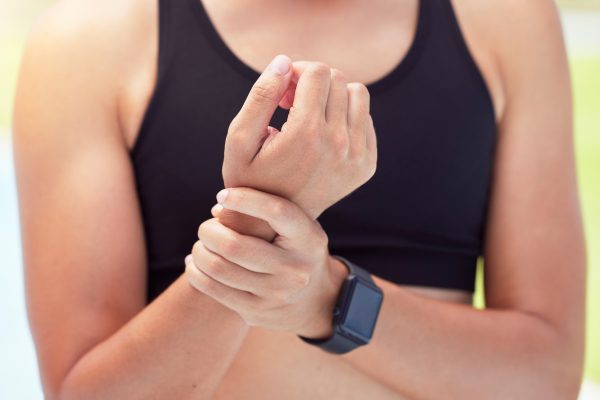The Centers for Disease Control and Prevention said that there are approximately 476,000 people that can get Lyme Disease. If you have Lyme or you know anyone who has the disease, then you understand how this can hinder a lot of activities and plans you want for your life. But it doesn’t mean it ends there. You can create a wellness and fitness routine to help you manage pain and symptoms from Lyme disease.
A fitness routine aims to improve daily energy levels so someone can continue working or performing basic activities like cooking, cleaning, self-care, and shopping. This blog post will give you ideas on staying active while living with this debilitating illness. The goal is for you to create a wellness and fitness routine while feeling inspired to keep living your everyday.

What is Lyme Disease?
A bacterial infection causes Lyme disease from the bacterium Borrelia burgdorferi. It spreads through the bite of an infected tick, usually Ixodes scapularis in North America or Ixodes ricinus in Europe. Symptoms of Lyme disease range from fever and headaches to arthritis-like joint pain, skin rashes, and fatigue. If left untreated, it can cause more severe symptoms such as heart palpitations, neurological problems, and cognitive deficits.
3 Stages of Lyme Disease
- Early Localized Disease – When an infected tick has bitten a person, they may experience fatigue, muscle, and joint soreness, swollen glands, and headaches. Sometimes, the area around the bite forms an expanding red ring. But one out of four people never develops this rash.
- Late Disseminated Disease – When left untreated for some time, Lyme disease can advance to what is known as late disseminated disease. This is characterized by more severe symptoms such as heart palpitations, neurological problems, and cognitive deficits. Treatment at this stage involves a longer course of antibiotics or IV therapy to destroy the bacteria.
- Post-Treatment Lyme Disease Syndrome – Also referred to as Chronic Lyme Disease, this is when the patient still experiences symptoms even after treatment has been administered. At this stage, physical activity and a healthy diet are essential for managing the symptoms.
Types of Exercise for Lyme Disease Recovery
Physical activity is an essential part of Lyme Disease recovery and should be tailored to the individual’s energy level, medical condition, and physical capabilities. Low-impact exercises such as swimming, walking, yoga, or tai chi are recommended as they do not require intense movement and minimize stress on the body. Strength training can also help build muscle, improve posture and reduce pain levels.
1. Stretching. Stretching exercises can help improve flexibility and mobility while helping to reduce joint stiffness.

2. Cardio. Low-intensity cardio, like walking or biking, can help increase energy levels and cardiovascular endurance.
3. Balance Exercises. Balance exercises like standing on one foot, balancing on a Bosu ball, or side-stepping with a resistance band can help improve balance, stability, and coordination.
4. Walking. Walks are a great way to get your blood flowing and stay active! Start with short walks on level surfaces, such as sidewalks. If you have the ability to go outside or live in an area where it’s safe from traffic noises (elevated walkways), then do so – but if not, there are always running errands around town that can be done while still getting steps into those muscles.

5. Yoga. Yoga is a great way to stretch tight muscles, increase flexibility, and improve balance. It can also help reduce stress levels.
6. Tai chi. Tai chi is a traditional Chinese martial art focused on slow, fluid movement. It can help improve posture, flexibility and even reduce stress.
It is understandable that staying active while living with chronic Lyme disease is very challenging. That’s why it is important to find a routine that works for you and stick with it. If you have any questions about creating a wellness and fitness routine with Lyme Disease, please don’t hesitate to contact your fitness coach or doctor.
Creating a Wellness & Fitness Routine
When living with chronic Lyme Disease, creating a wellness and fitness routine is essential for improving overall health and well-being. We suggest starting small and gradually increasing your activity level over time. It is always essential to remember to listen to your body and pay attention to any pain or fatigue you may experience.
- Start out by walking at a slow pace for 10-15 minutes. You can always break it up into shorter segments throughout the day if needed. As your energy levels increase, you can add more challenging activities like biking, swimming, running, or yoga.
- Make sure to focus on proper form and technique when performing any type of exercise as this will help reduce the risk of injury or worsening symptoms. Additionally, talk to your doctor before engaging in any physical activity.
- It is also important to remember that rest is just as important as exercise for managing Lyme Disease. Take breaks and listen to your body. Consider trying mindful activities such as meditation, deep breathing exercises, and visualization techniques to help reduce stress levels and promote relaxation.
- Remember to surround yourself with positive friends and family and find a community that supports you. Laughing and discovering daily joy will also allow you to cope better with any challenges you might face. A Gratitude Journal is also helpful.”
Bonus Tip: Using an Advanced Bioenergetic Technology
Lyme symptoms can persist even though you have a fitness or wellness routine. But here’s the good news, WAVE 1 helps you lessen these symptoms so you can live a fuller and happier life. WAVE1 is a wearable frequency technology that’s based on bioenergetic science. You can know more about it by visiting this page.


